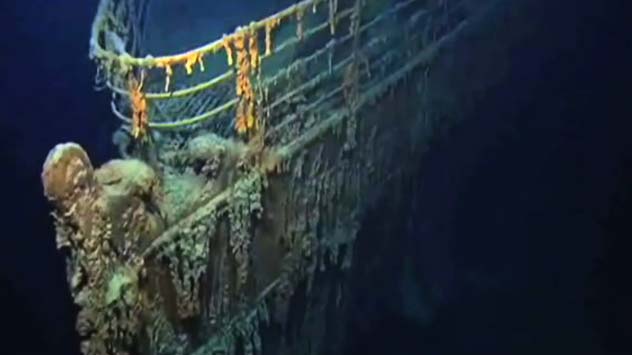Titanic Wreck Site Gets UNESCO Protection


The wreck of the Titanic will come under UNESCO protection as the 100th anniversary of its sinking passes on 15 April, the United Nations cultural body said.
Exactly 100 years ago, on April 10, 1912, the Royal Mail Steamer Titanic left Southampton, England, on her maiden voyage, bound for New York City. At 11:40 p.m. on Sunday, April 14, she struck an iceberg in the North Atlantic: within three hours, the ship sank to a depth of more than 12,400 feet. More than two-thirds of the 2,224 passengers and crew perished.
Since the British liner sank in international waters, "no State has exclusive jurisdiction over the wreckage area," the Paris-based Unesco said in a statement.
For this reason, the wreck, as well as other vessels that sank in international waters at least 100 years ago, will fall under the cover of the 2001 UNESCO convention on the protection of underwater cultural heritage.
BLOG: The Titanic: What Made It Sink
?"The sinking of the Titanic is anchored in the memory of humanity and I am pleased that this site can now be protected by the UNESCO Convention,?" ?said Unesco director general Irina Bokova.? ?
"But there are thousands of other shipwrecks that need safeguarding as well.? ?All of them are archaeological sites of scientific and historical value.? ?They are also the memory of human tragedy that should be treated with respect," she said.
Get the world’s most fascinating discoveries delivered straight to your inbox.
The 41 signatory states, which do not include the US and Canada, "will prohibit the pillaging, sale and dispersion of the wreck and its artifacts."
"They shall take all measures in their power to protect the site, and to ensure that proper respect is given to the human remains still to be found on it," the UNESCO said.
BLOG: Titanic Wreck Site Mapped
Since it was discovered on September 1, 1985, during a joint French/U.S. expedition lead by Jean-Luis Michel of the French Research Institution for the Exploration of the Seas (IFREMER) and Dr. Robert Ballard, what remains of the Titanic has been visited by dozens of expeditions.
The wreck is rusting away at a depth of nearly 2 and half miles beneath the North Atlantic’s chilly waters, approximately 340 nautical miles off the coast of Newfoundland, Canada. This hasn't prevented mini submarines from lifting items, developing a black market of highly priced Titanic artifacts.
Under the UNESCO convention, signatory states have the authority to seize any illicitly recovered artefacts and close their maritime ports to ships undertaking unscientific or unethical explorations.
Concern about the commercial exploitation of the Titanic also involves submarine cruises to the wreck.
NEWS: Titanic Being Eaten by Destructive Bacteria
Indeed, several private deep sea dives costing about $60,000 a seat will take place this summer.
The submarines are accused of speeding up the damage by landing on the wreck - a claim that expedition operators strong deny.
According to Ulrike Guerin, the Unesco official responsible for the convention, some damage has been also done by memorial plaques being placed on the wreck.
Although neither the US and Canada are among the signatory states of the UNESCO convention, they have concluded in 2003, along with France and the United Kingdom, a so-called "International Agreement Concerning the Shipwrecked Vessel RMS Titanic."
Known as the "Titanic Agreement," the document -- not yet in force -- offers the same protections established by the Unesco convention.
This story was provided by Discovery News.


